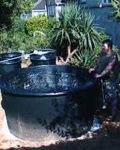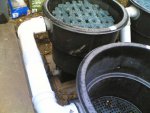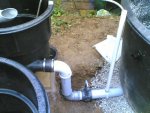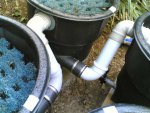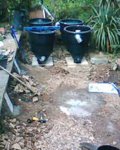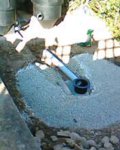Quilt Batting filter is just one rendition of this kind of mechanical filtration that uses variations of pads or cloth or other type of material.
Joanandcliff, a member here,
also has a mechanical filtration using various pads that appears to do quite well.
Japanese matting is pretty popular as well.
Looks like Dave probably has pads with bigger pores at the top then pads with smaller pores on the bottom.
ERIC is a good website that has really built upon this type of mechanical filtration so there are its uses; the website is an interesting read as well.
The quilt batting one seems very doable, but the question of the day is, how quickly will it clog?
It all depends on the micron size of the filtration. Otherwords, depends on the materials you use and how you phase them. It is like your settling tank is phase 1 to remove the really big debris. These pad type mechanical filtrations go in a series where the initial pads have very big opens, next smaller, and so on, then the last set of pads is the finest that is considered the "polishing pads".
Skimmers also act like the phase 1 of mechanical filtration by removing the really big debris.
When these mechanical filtration systems need ot be clean, ALL of the padds must be cleaned which can take some time. So, I have seen people have 2 sets. One clean set that they switch in really fast so they can clean the second set whenever they get around to it.
The S&G filter is more expensive DIY, due to the blower cost, only requires a 60~90 second flush out and that is it. Maybe, once every 5 years the filter would need to be torn apart and rebuilt. This filter can also be buried.
The more expensive rotary drum and sieve filters never need to be taken out and are essentially " 90% self cleaning ". Depending on the product, some of these can be buried as well.
The number of times you need to clean the mechanical filtration will depend on the volume and quality of filtration versus the potential debris accumulation in the pond.
I'm not knocking one over the other. Just trying to explain all the options you have. They all have their pro's and con's. It depends on what matches your budget and your comfort level.
With your limited budget, the mechanical filtration that uses a series of phases containing various pads and materials might be the best option.


